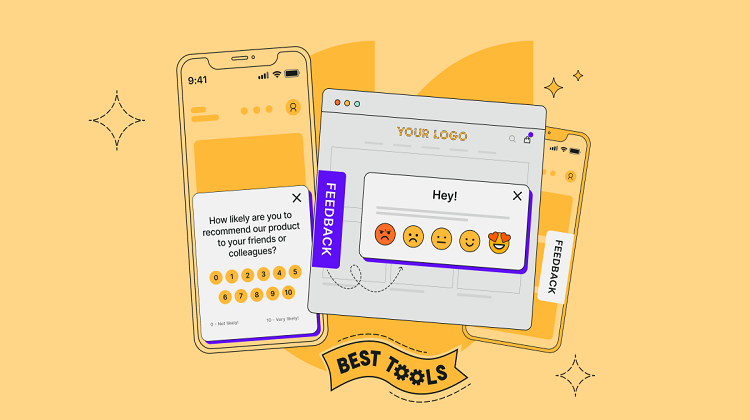
As the mobile app market becomes increasingly competitive, user satisfaction is becoming more critical than ever before. One way to ensure your app meets customers’ needs is through in-app user feedback. In-app user feedback is a powerful tool for understanding user behaviour, preferences, and pain points. This article will discuss the importance of in app feedback for building user-centred apps and offer tips for implementing an effective feedback system.
Why In-App User Feedback is Essential
This tool allows users to provide feedback without leaving the app, making it a convenient and frictionless experience. Here are some reasons why this feedback is essential:
Real-time feedback: It provides real-time feedback, allowing developers to identify and fix issues as they arise quickly. This means that users have a better experience, and the app is more likely to be successful.
User engagement: This feedback creates a dialogue between users and developers, which can improve user engagement. Users feel that their opinions are valued and are more likely to persist using the app.
Data-driven decision-making: Valuable user behaviour and preferences data is available using this tool. This data can be employed to make informed decisions about the app’s design and functionality.
Continuous improvement: In-app user feedback allows developers to improve the app based on user feedback continuously. This means the app will remain relevant and meet user needs over time.
Implementing an Effective In-App User Feedback System
Implementing an effective system requires careful planning and execution. Here are some suggestions for creating a successful feedback system:
Make it easy for users to provide feedback: Users are more likely to provide it if it is convenient. Provide clear and accessible feedback options within the app.
Be specific about the type of feedback you want: Be clear about the type of feedback you are looking for. For example, ask for feedback on a specific feature or ask users to rate their overall experience.
Respond to feedback: Responding to feedback shows users that their opinions are valued. This can improve user engagement and increase user loyalty.
Use feedback to make improvements: Make informed decisions about the app’s design and functionality. This will ensure that the app meets user needs and remains relevant over time.
Analyse feedback data: Analyse feedback data to identify trends and patterns. This data can be used to make data-driven decisions about the app’s design and functionality.
Examples of In-App User Feedback
There are many different ways to incorporate such a feedback into your app. Here are some examples:
In-app surveys: In-app surveys are a common form of in-app user feedback. They can be used to collect feedback on specific features or to gather details on the overall user experience.
Feedback forms: Feedback forms can be used to gather detailed user feedback. They can be used to gather feedback on specific features or on the overall user experience.
Ratings and reviews: Ratings and reviews are popular in this feedback. They allow users to rate their experience and provide detailed feedback.
User testing: User testing involves observing users using the app and gathering real-time feedback. This can provide valuable insights into user behaviour and pain points.
Conclusion
The in app feedback is essential for building user-centred apps. It provides real-time feedback, improves user engagement, and allows data-driven decision-making. Implementing an effective in-app user feedback system requires careful planning and execution, but the benefits are worth the effort. By incorporating this tool into your app, you can ensure that it meets user needs and remains relevant over time.



